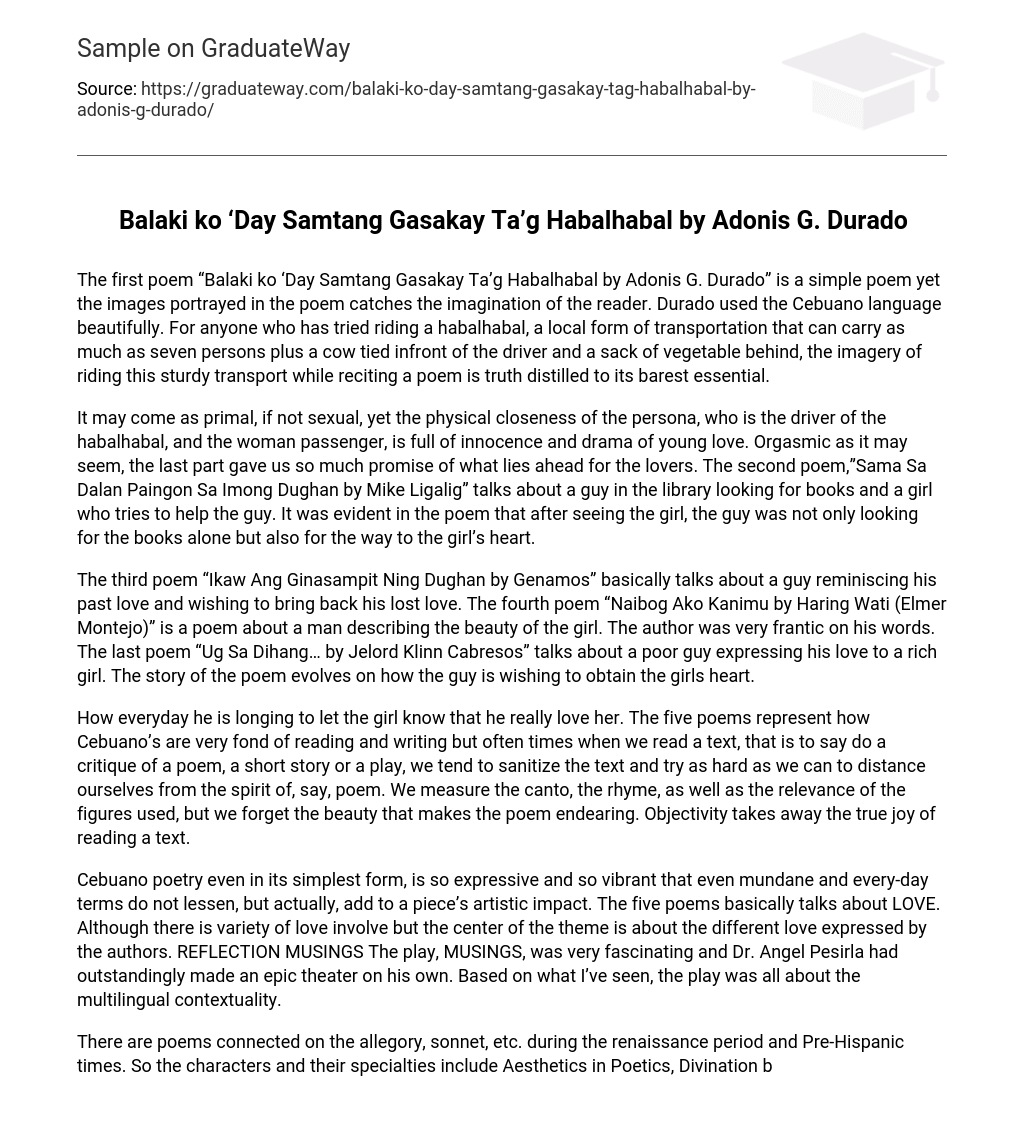The first poem Balaki ko ‘Day Samtang Gasakay Ta’g Habalhabal by Adonis G. Durado is a simple poem yet the images portrayed in the poem catches the imagination of the reader. Durado used the Cebuano language beautifully. For anyone who has tried riding a habalhabal, a local form of transportation that can carry as much as seven persons plus a cow tied infront of the driver and a sack of vegetable behind, the imagery of riding this sturdy transport while reciting a poem is truth distilled to its barest essential.
It may come as primal, if not sexual, yet the physical closeness of the persona, who is the driver of the habalhabal, and the woman passenger, is full of innocence and drama of young love. Orgasmic as it may seem, the last part gave us so much promise of what lies ahead for the lovers.
The second poem,”Sama Sa Dalan Paingon Sa Imong Dughan by Mike Ligalig” talks about a guy in the library looking for books and a girl who tries to help the guy. It was evident in the poem that after seeing the girl, the guy was not only looking for the books alone but also for the way to the girl’s heart.
The third poem “Ikaw Ang Ginasampit Ning Dughan by Genamos” basically talks about a guy reminiscing his past love and wishing to bring back his lost love.
The fourth poem “Naibog Ako Kanimu by Haring Wati (Elmer Montejo)” is a poem about a man describing the beauty of the girl. The author was very frantic on his words.
The last poem “Ug Sa Dihang… by Jelord Klinn Cabresos” talks about a poor guy expressing his love to a rich girl. The story of the poem evolves on how the guy is wishing to obtain the girls heart. How everyday he is longing to let the girl know that he really love her. The five poems represent how Cebuano’s are very fond of reading and writing but often times when we read a text, that is to say do a critique of a poem, a short story or a play, we tend to sanitize the text and try as hard as we can to distance ourselves from the spirit of, say, poem.
We measure the canto, the rhyme, as well as the relevance of the figures used, but we forget the beauty that makes the poem endearing. Objectivity takes away the true joy of reading a text. Cebuano poetry even in its simplest form, is so expressive and so vibrant that even mundane and every-day terms do not lessen, but actually, add to a piece’s artistic impact.





